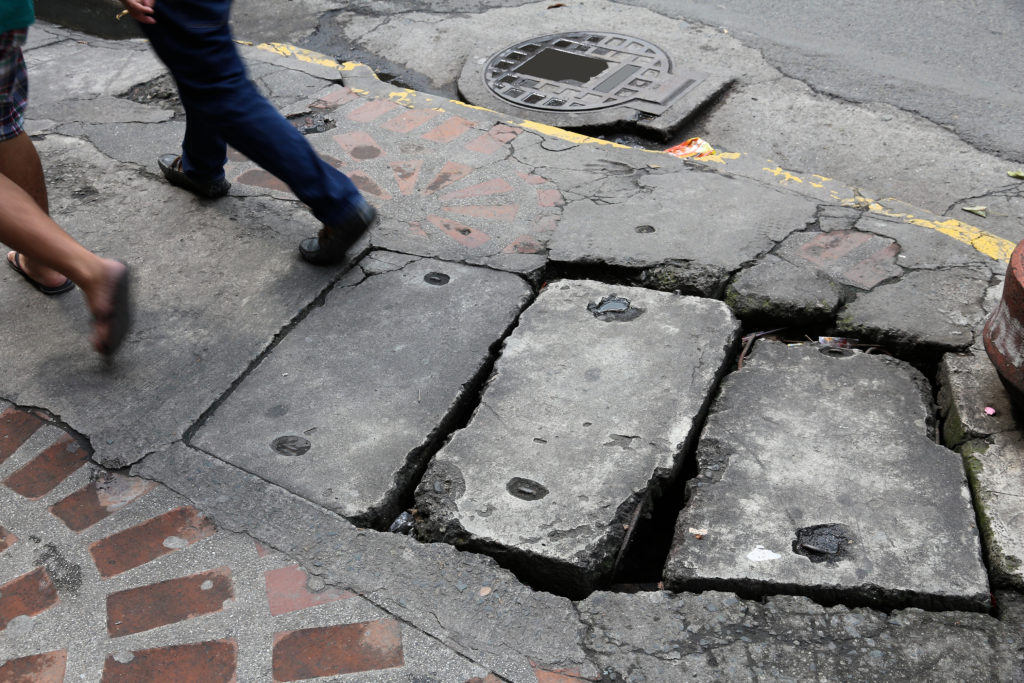Sidewalks are everywhere in New York City. With almost 13,000 miles of sidewalk to traverse throughout the five boroughs, the City’s sidewalk system helps millions of New Yorkers get where they need to go. However, sidewalks are not always maintained in a safe condition which can lead to trip and fall accidents and injuries.
Uneven pavement, potholes, cracks, depressions, tree pits, snow and ice, debris, and other defects can all cause a pedestrian to trip and fall or slip and fall, and sustain injuries as a result thereof. If the fall was caused by an unsafe or dangerous condition, the party responsible to safely maintain that area may be held liable for their negligence, and responsible for your damages.
Understanding New York City’s Sidewalk Law
Determining liability for a sidewalk trip and fall in New York City can be complex. While sidewalks are primarily public walkways, the party responsible for safely maintaining them is not necessarily the City of New York. In fact, there are actually limited situations in which the City is responsible for sidewalk maintenance. Since the enactment of New York City Administrative Code 7-210 in 2003, responsibility and liability shifted from the City to the adjacent building owners of the sidewalk where you fell.
Commonly referred to as the “Sidewalk Law”, §7-210 makes adjacent property owners responsible for maintaining the sidewalk that abuts their property. The law specifies that the sidewalk must be kept in a “reasonably safe condition”. This means property owners have a certain amount of time to repair defects and remove snow and ice from their abutting sidewalk. Failure to do so can result in the property owner, manager, or other responsible party, being held liable for any trip and fall injuries caused by their negligent maintenance.
New York City’s Sidewalk Law Exceptions
Even though the City is no longer responsible for the majority of sidewalk trip and falls, there are exceptions. The Sidewalk Law generally exempts the owners of one, two, or three-family homes as long as long as they are occupied by the owner and are used only for residential purposes. In these instances, the City may still be held liable for a trip and fall that occurs on the sidewalk abutting one of these properties.
Recoverable Damages in a Sidewalk Trip and Fall Case
Sidewalk trip and fall accidents can be serious matters, resulting in a wide range of injuries and extent of required medical treatment. Examples of typical sidewalk fall injuries include:
- Twisted ankles
- Broken/fractured foot bones
- Sprains and strains
- Hip fractures
- Knee tears
- Spine injuries
- Traumatic brain injury
- Paralysis
- Fatality
Trip and fall injuries due to sidewalk defects can result in the need for extensive medical care, treatment, and rehabilitative therapy. They can also cause you to lose time from work. If your sidewalk trip and fall is caused by the negligence of another party, they may be held liable for your damages in a personal injury action based on premises liability.
In a personal injury action, you may be entitled to compensation for economic damages in a sidewalk trip and fall. These can include out-of-pocket medical expenses, past and future medical expenses, and lost wages. You may also be entitled to recover non-economic damages including compensation for pain and suffering, emotional distress, loss of consortium, and punitive damages.
Contact a New York Premises Liability Attorney
If you sustained injuries in a trip and fall accident, it is important to contact an experienced personal injury attorney right away who handles premises liability cases. In any trip and fall accident, there are strict statutes of limitations that begin running from the date of the accident and shorter ones if the claim involves a municipality. If you tripped and fell due to another’s negligence, The Dearie Law Firm, P.C. can help you obtain the maximum compensation available for your injuries.
The Dearie Law Firm, P.C. has convenient office locations in Manhattan, Brooklyn, and the Bronx as well as mobile locations serving Brooklyn, Queens, Manhattan, the Bronx, Staten Island, Westchester, Rockland County, Nassau County, and Suffolk County. Contact us at (212) 970-6500 for a consultation.

